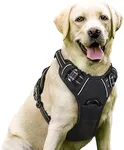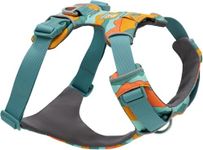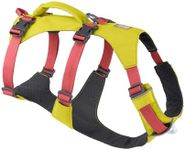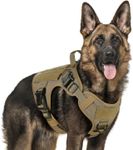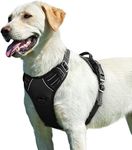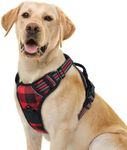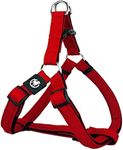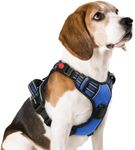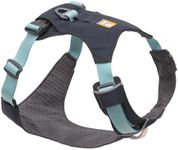Buying Guide for the Best Harness For Dogs
Choosing the right harness for your dog is important for both comfort and safety during walks, training, or travel. A good harness can help prevent pulling, reduce strain on your dog's neck, and give you better control. To find the best fit, consider your dog's size, activity level, and any specific needs such as training or medical conditions. Always measure your dog carefully and think about how and where you'll use the harness most often.Size and AdjustabilitySize refers to the overall fit of the harness on your dog, and adjustability means how much you can change the straps to get a snug fit. This is important because a harness that's too tight can cause discomfort or chafing, while one that's too loose can slip off or allow your dog to escape. Harnesses usually come in sizes like small, medium, large, and extra-large, often based on your dog's chest and neck measurements. Adjustable straps help you fine-tune the fit. To pick the right one, measure your dog's girth (the widest part of the chest) and neck, then compare these to the sizing chart provided by the manufacturer. If your dog is between sizes, choose the one with more adjustability.
Harness Type (Back-clip, Front-clip, Dual-clip, Step-in, Overhead)Harness type refers to where the leash attaches and how you put the harness on your dog. Back-clip harnesses have the leash attachment on the back and are good for calm dogs who don't pull much. Front-clip harnesses have the attachment on the chest and help reduce pulling by redirecting your dog. Dual-clip harnesses offer both options for flexibility. Step-in harnesses are put on by having your dog step into them, while overhead harnesses go over the head. Choose a type based on your dog's behavior and your comfort with putting it on. For strong pullers or training, a front-clip or dual-clip is often best. For easygoing dogs, a back-clip or step-in harness may be sufficient.
Material and PaddingThe material of the harness affects its durability, comfort, and breathability. Common materials include nylon, polyester, and mesh, sometimes with added padding for comfort. Padding helps prevent rubbing and is especially important for dogs with sensitive skin or those who wear the harness for long periods. Breathable materials are good for hot climates or active dogs. When choosing, think about your dog's activity level and skin sensitivity. For daily walks, a lightly padded, breathable harness is usually enough. For hiking or long outings, look for extra padding and sturdy materials.
Ease of UseEase of use means how simple it is to put the harness on and take it off your dog. Some harnesses have quick-release buckles, while others may require more steps. This is important for both your convenience and your dog's comfort, especially if your dog is wiggly or impatient. If you want something fast and simple, look for harnesses with fewer buckles or step-in designs. If your dog is calm and patient, you might not mind a more complex harness if it offers other benefits.
Safety FeaturesSafety features can include reflective strips for visibility at night, sturdy buckles, and secure leash attachment points. These features are important for keeping your dog safe during walks, especially in low-light conditions or busy areas. Reflective elements help drivers and cyclists see your dog, while strong buckles and attachments prevent accidental escapes. If you walk your dog early in the morning, at night, or near traffic, prioritize harnesses with good visibility and secure fastenings.
